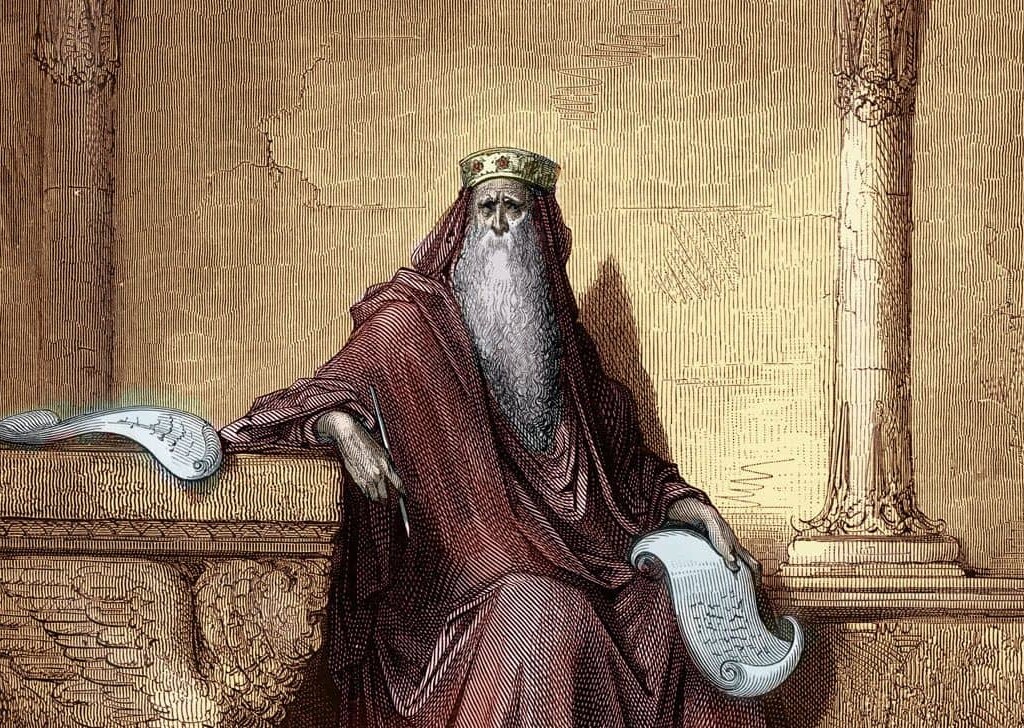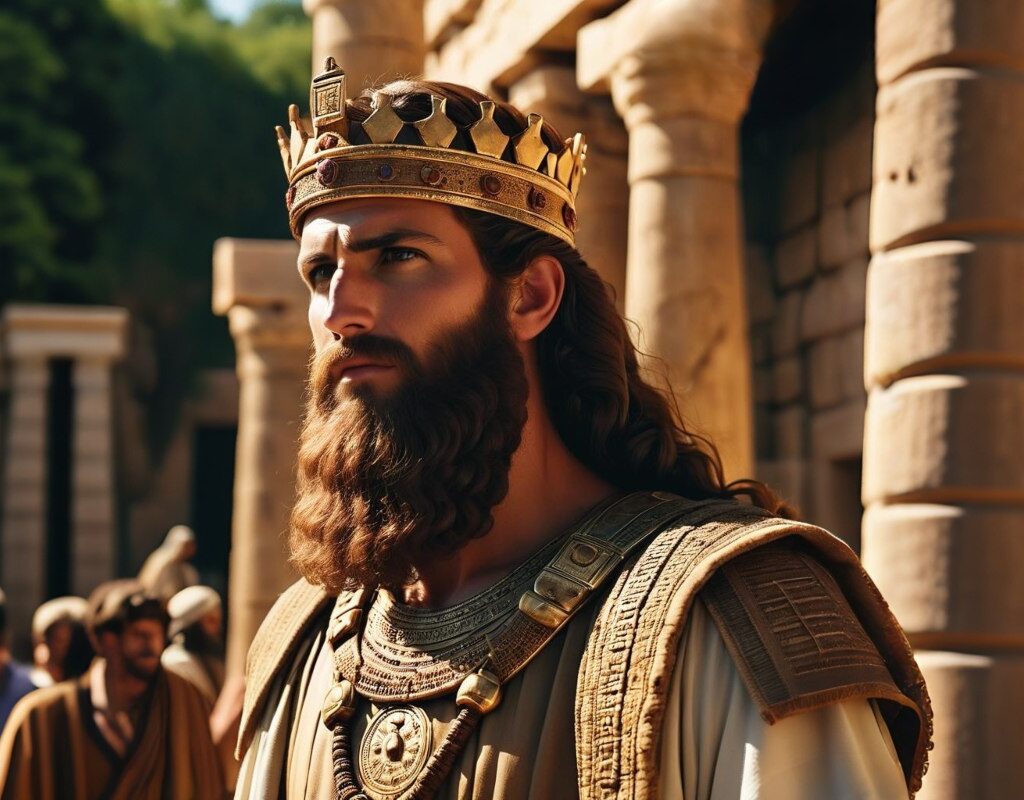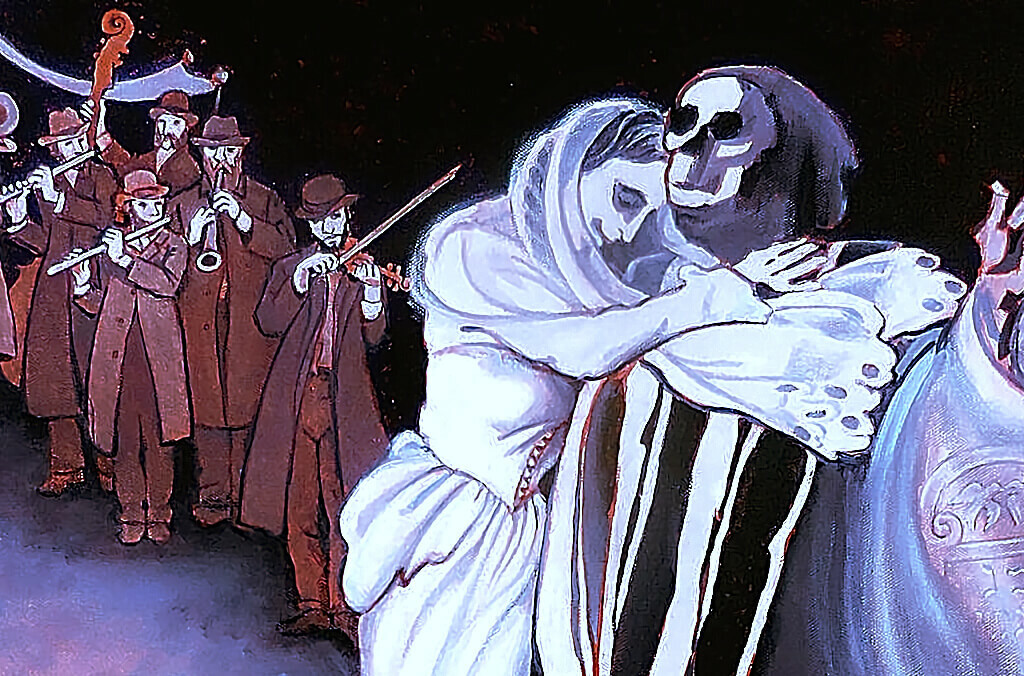The Testament of Solomon, an intriguing pseudo-epigraphic work that is said to have been written by King Solomon himself, has been the subject of analysis and debate among experts and theologians for centuries. Although it is attributed to the authorship of this iconic figure from the Old Testament, both Jewish and Christian traditions do not recognize it as part of their canonical scriptures.
The Testament of Solomon: A pseudo-epigraphic enigma with uncertain origins
This story, originally written in Greek dates back approximately to the first centuries of the first millennium of our era.
It tells how Solomon gained the ability to dominate demons and use them in the construction of his majestic temple in Jerusalem, all thanks to a magic ring that the Archangel Michael gave him.
Although the text is presented as a first-person account of Solomon, the opinions of experts on its true dating are diverse and fluctuate between the end of the first century and the end of the fourth century.
The idea that this work details events contemporary to Solomon’s life has been discredited by most academics because of temporal contradictions.
Solomon’s Testament has been the subject of intense debate as to whether its origin is Jewish or Christian. Despite the differences, there is consensus that the document incorporates and broadly reflects first-century Jewish beliefs and customs in Palestine and even includes references to much older traditions.
The identity of the true author or authors of this text remains a mystery. What can be said is that the text is imbued with a mix of themes and symbols that range from Christian and Judaic theology to Greek mythology and astrology.
This diversity of influences has led some experts to suggest that its author could be a Christian educated in the Greek tradition.
Ornias, Ephippas and Beelzebub: The Demons Under the Yoke of Solomon in His Enigmatic Testament
Among the most outstanding figures in the text are the demons Ornias, Ephippas and Beelzebub, who play crucial roles in the construction of Solomon’s temple.
Ornias, a demon known for sucking the vitality of a young man close to Solomon, becomes the first creature that the King submits to his will.
After praying in his temple, Solomon receives from the hands of the Archangel Michael a ring with the Seal of God in the shape of a pentagram. The young man, who is being harassed by Ornias uses this ring to stamp the seal on the demon and place it under his control. Upon retrieving the ring, Solomon orders Ornias to subdue the prince of demons, Beelzebub.
Beelzebub, one of the most iconic characters in demonology reveals in the text that before his fall, he was the highest-ranking angel in Heaven.
Once subdued, Solomon uses it to command all the demons in the construction of his temple. In a fascinating passage from chapter 18, demons associated with the 36 astrological decans are presented, who is in charge of different diseases and ailments and magical formulas are described to combat them.
One of the most spectacular encounters narrated in the Testament is that of Solomon with Ephippas, a wind demon that terrorizes the land of Arabia.
Solomon sends a servant equipped with his magic ring and a wineskin with the mission of capturing the demon in the wineskin. The servant succeeds and returns with Ephippas trapped. This wind demon plays a crucial role in helping to place a massive cornerstone at the entrance of the temple.
In a stunning twist, Ephippas and a Red Sea demon named Abizithibod bring a mysterious column from the Red Sea. Abizithibod is revealed to be an adversary of Moses who claims to have supported the Egyptian magicians and hardened the pharaoh’s heart.
Remphan, Moloch and the Seven Sisters: The Decline of Solomon and the Merging of Traditions in His Testament
In a dramatic conclusion to Solomon’s Testament, the pseudo-epigraphic work sheds light on the king’s decline, marked by impulsive decisions and the fusion of different traditions and mythologies.
The text reveals how Solomon, intoxicated by his love for a Shunammite woman, gives in to temptation and agrees to worship the deities Remphan and Moloch, in a slip that would cost him his relationship with the divine.
Although he initially makes a symbolic sacrifice, crushing five locusts in his hand, the act has dire consequences. The spirit of God leaves Solomon and his wisdom and intelligence vanish, making his name an object of mockery between humans and demons.
Solomon, in a tone of regret, concludes his story with a severe warning to readers, urging them not to be carried away by carnal passions to the point of abandoning their beliefs. In addition to these events, the Testament of Solomon weaves elements from different cultures into its narrative.
One of the most prominent Christian themes in the text is the prophecy of the demon Ephippas about the coming of a savior.
When Solomon questions Ephippas about the loss of his angelic powers, the demon replies that he will only be defeated by a man born of a virgin who will be crucified by the Jews. This prophetic allusion to the figure of Jesus Christ highlights the integration of Christian elements in the text.
In parallel, the Greek influence is palpable in Solomon’s encounter with seven demons who identify themselves as sisters.
These entities report that their home is between the stars and Mount Olympus and are represented as the Pleiades, a well-known cluster of stars from Greek mythology with astrological meaning.
In addition, Solomon encounters Obizuth, a female demon described as an entity without limbs and with a messy mane of hair. Some experts suggest that Obizuth may be a representation of Medusa or a creature similar to the gorgons in Greek mythology.
Between Changing Forms and Demons from Different Cultures: Enepsigos and Asmodeus in Solomon’s Testament
With the help of supernatural entities, intriguing figures such as Enepsigos and Asmodeus emerge. These demons, along with others, illustrate the amalgamation of cultures and mythologies that are woven into the narrative.
Enepsigos, one of the demons presented in the text, reveals himself to King Solomon as a being capable of taking three different forms, including that of the Greek Titan Kronos.
This metamorphosis relates it to Greek mythology and its representation as a female figure with three faces evokes Hecate, a deity associated with magic and the moon in the same tradition. The astral connection also extends to the lunar sphere, an additional element that links Enepsigos to astrology and Greek mythology.
Asmodeus, on the other hand, is a famous demon in different cultures. In the Testament of Solomon, he is one of the demons that the king subjugates to build his temple.
This narrative is echoed in the Babylonian Talmud where Solomon enslaves Asmodeus known as the King of Demons. Asmodeus appears in the Book of Tobit and is associated with lust and seduction. The will presents a mosaic of entities from diverse origins, including Greek, Egyptian, Jewish, Christian and Arab.
One of the particularly disturbing demons is that without a head, while others, such as Abyzou, relate to dark aspects of sexuality and are compared to figures such as Lilith, famous for her role in legends about the strangulation of newborns.
Also notable is the case of the demon Abezethibou who is credited with hardening the pharaoh’s heart, an act that is traditionally attributed to Yahweh in biblical texts.
The Testament of Solomon with its enigmatic list of demons – including Ornias, Beelzeboul, Onoskelis, Tephras, the Sisters of the Seven Stars (related to the Pleiades), Enepsigos, among others – serves as a window to a world where myths and legends from diverse cultures are intertwined, providing additional dimensions to the rich tapestry of demonology and ancient history.




